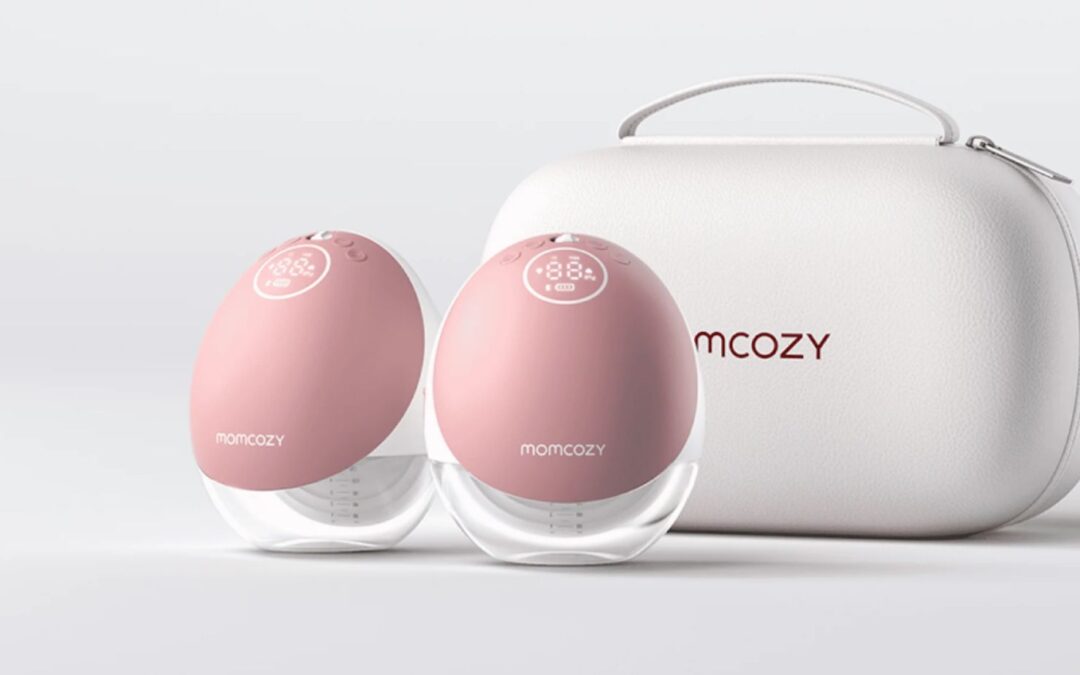Expressing breast milk by hand is a valuable skill for breastfeeding mothers. It’s simple, effective, and can be done without any special equipment. Just like learning to ride a bike, once you get the hang of it, it becomes second nature.
In What Situations May You Hand Express Breast Milk
Hand-expressing breast milk may be necessary in the following situations:
● When your breasts are too full, hand expression can help relieve engorgement by removing a small amount of milk before breastfeeding or pumping, making the process more comfortable.
● If you need to increase your milk supply, hand expression can stimulate the breasts after a feeding session, signalling your body to produce more milk.
● In situations where an electric pump or manual pump isn’t available, hand expression is a simple and effective method to collect milk.
● When babies cannot breastfeed directly, hand expression may help collect colostrum and breast milk for feeding.
● Hand expression combined with gentle massage can help clear blocked milk ducts and prevent or relieve mastitis.
● Sometimes mothers may need to express milk for comfort when they’re away from their baby or have missed a feeding session.
What to Prepare Before Hand-Expressing Breast Milk
Good preparation illustrated as the 6 steps that follow will facicitate your hand-expressing breast milk and help avoid unnecessary problems, such as sanitary conditions.
1.Always clean your hands thoroughly with soap and water before starting to prevent contamination of the milk.
2.Find a private, comfortable place to sit where you can relax. Stress can inhibit milk flow, so being at ease is important.
3.Applying a warm compress to your breasts or taking a warm shower can help stimulate the let-down reflex, making milk expression easier.
4.Gently massage the breasts before and during expression to stimulate milk flow. Start from the outer edges of the breast and move toward the nipple.
5.Have a clean, sterile container ready to collect the expressed milk.
6.Keep a glass of water or other fluids nearby, as staying hydrated can support milk production.
How to Express Milk By Hand
Well, you may follow the steps after cleaning your hands and place yourself anywhere comfortable:
1.Gently massage your breasts in a circular motion, working from the outer edges toward the nipple. This helps stimulate the let-down reflex.

2.Place your thumb above and your fingers below your nipple, forming a “C” shape about an inch or so from the base of the nipple.
3.Gently press your thumb and fingers toward your chest wall, then compress the breast tissue to move the milk toward the nipple. Avoid squeezing or pinching the nipple itself, as this can cause discomfort.
4.After compressing, release your fingers and repeat the motion in a rhythmic pattern. You can rotate your hand around the breast to express from different areas.
5.When the milk flow slows down from one breast, switch to the other breast and repeat the same process. You may need to switch back and forth a couple of times to ensure both breasts are well-drained.
6.Once you’ve expressed a sufficient amount, collect the milk in a clean, sterile container, and store it appropriately.
How to Collect Hand-Expressed Milk
It’s a straightforward process that, however, needs your attention.
1. Make sure you have a sterile container, such as a clean bottle or milk storage bag. The container should be made of food-grade plastic or glass and have a secure lid.

2.Hold the container near your breast, just below your nipple, or place it on a flat surface if you can express while leaning forward.
3.When doing it, by hand, direct the milk flow into the container. You may need to reposition the container or your hand to ensure all the expressed milk is caught.
4.If you switch to the other breast, use the same or a separate sterile container for that milk.
5.Once you’ve finished expressing, seal the container with a lid and label it with the date and time of expression.
6.Immediately store the collected milk in the refrigerator or freezer for later use.
About Colostrum
A special mention goes to colostrum, the first form of breast milk produced by mothers during pregnancy and immediately after birth. It’s thick, sticky, and usually yellow or clear in color. Colostrum is highly concentrated with nutrients, antibodies, and immune-boosting properties, making it vital for newborns. It helps protect the baby from infections, aids in digestion, and serves as a natural laxative to help the baby pass their first stool (meconium).
Why Moms May Need to Hand-Express Colostrum
● Some babies, especially premature or weak newborns, may struggle to latch properly, making it necessary to express colostrum by hand for feeding .
● Hand expression can help initiate milk production and encourage the body to produce more colostrum in the early days.
● In cases where the baby is unable to breastfeed directly or if you’re separated from your baby, expressed colostrum can be collected and stored for future feeding.
● If a mother has health conditions or needs to undergo a medical procedure, expressing colostrum ensures the baby can still receive its benefits.
How to Hand Express Colostrum
Well, Expressing colostrum is similar to breast milk expression by hand:
1.Wash your hands thoroughly to maintain hygiene.
2.Have a quiet, relaxing space and use a warm compress on your breasts for a few minutes.
3.Massage the entire breast gently, starting from the outer edges and moving toward the nipple.
4.Place your thumb above the nipple and your fingers below, about 1–1.5 inches away from the nipple, forming a “C” shape.
5.Press your thumb and fingers together, pushing toward your chest wall, then compress toward the nipple without pinching. Colostrum is thicker than regular breast milk and may come out in small drops.
6.Collect the drops in a sterile syringe, spoon, or small container. Because colostrum is small in quantity, this method ensures none is wasted.
7.Once the flow slows down, switch to the other breast and repeat the process.
Difference Between Hand Expressing Milk and Breast Pumping
| Areas in Comparison | Hand Expressing | Breast Pumping |
| Method | Manually compressing the breast with your hands. | Uses an electric or manual device with suction. |
| Control and Comfort | Greater control over pressure, helpful for sore nipples or tender breasts, and allows targeting specific areas. | Continuous suction, less customizable, though many pumps have adjustable settings for comfort. |
| Milk Flow and Volume | Typically slower, yielding smaller volumes of milk per session, making it useful for colostrum collection or small amounts. | Faster and more efficient, especially with double pumping, for extracting larger quantities of milk. |
| Convenience | Ideal for quick, on-the-go milk expression in any location. | Requires a breast pump, power source (for electric models), and often a private space, especially for larger models. |
| Cost | Free, as no equipment is needed, making it a low-cost option. | Involves costs for the pump, storage accessories, and potential replacement parts. |
| Learning Curve | Requires more practice to master the technique, but highly effective once learned. | Easier to start with, especially with electric models, but adjusting settings for comfort may take some trial and error. |
FAQs
How long should I hand-express milk for?
Hand expression sessions typically last between 20 to 30 minutes. However, you can continue expressing until your breasts feel soft and comfortable. Switching between breasts when milk flow slows down can help ensure both breasts are well-drained.
Can I hand-express milk if I’m engorged?
Yes, hand expression is helpful for relieving engorgement. By expressing a small amount of milk, you can reduce the fullness and make breastfeeding or pumping more comfortable.
How do I know if I hand-express milk correctly?
If you feel gentle pressure without pain and milk is being expressed, you are likely doing it correctly. Avoid squeezing or pinching your nipple directly, as this can cause discomfort.
How can I boost my milk flow when hand expressing?
Relaxing and massaging your breasts before and during expression can help stimulate your let-down reflex. Using a warm compress on your breasts can also encourage milk flow.
How often should I hand-express milk?
You should hand express as often as your baby would normally feed, around 8-12 times in a 24-hour period, especially in the early weeks, to establish a milk supply.
Is it normal to express only a small amount of milk at first?
Yes, especially if you’re expressing colostrum or just starting out. Hand expression might yield smaller amounts compared to pumping, but this is normal and effective for ensuring milk flow and stimulating supply.
Can I express myself in public?
Yes, hand expressing can be done discreetly without the need for special equipment, making it convenient if you need to relieve fullness when you’re on the go.
Can I combine milk expressed at different times?
Yes, you can combine milk from different expressions, but ensure the milk is at the same temperature before mixing. Cool freshly expressed milk in the fridge before adding it to already chilled milk.
Ben Austin is the founder and CEO of multi-award-winning digital marketing agency Absolute Digital Media. Ben loves to write and share exclusive insights into the world of digital marketing from his own eyes.





